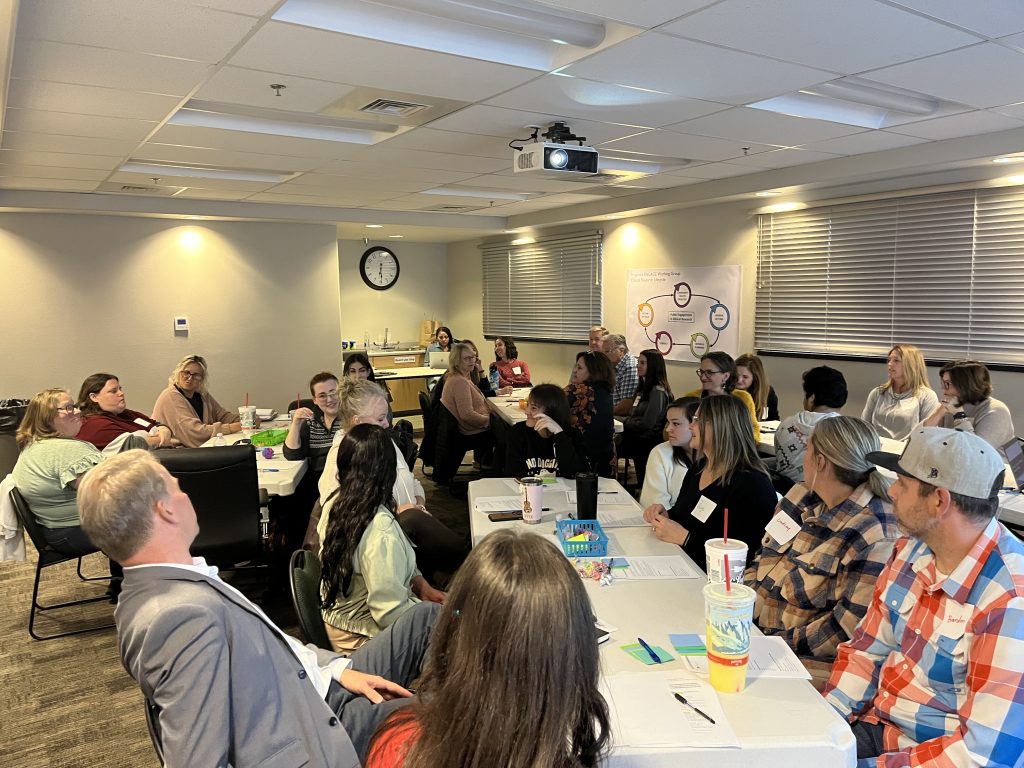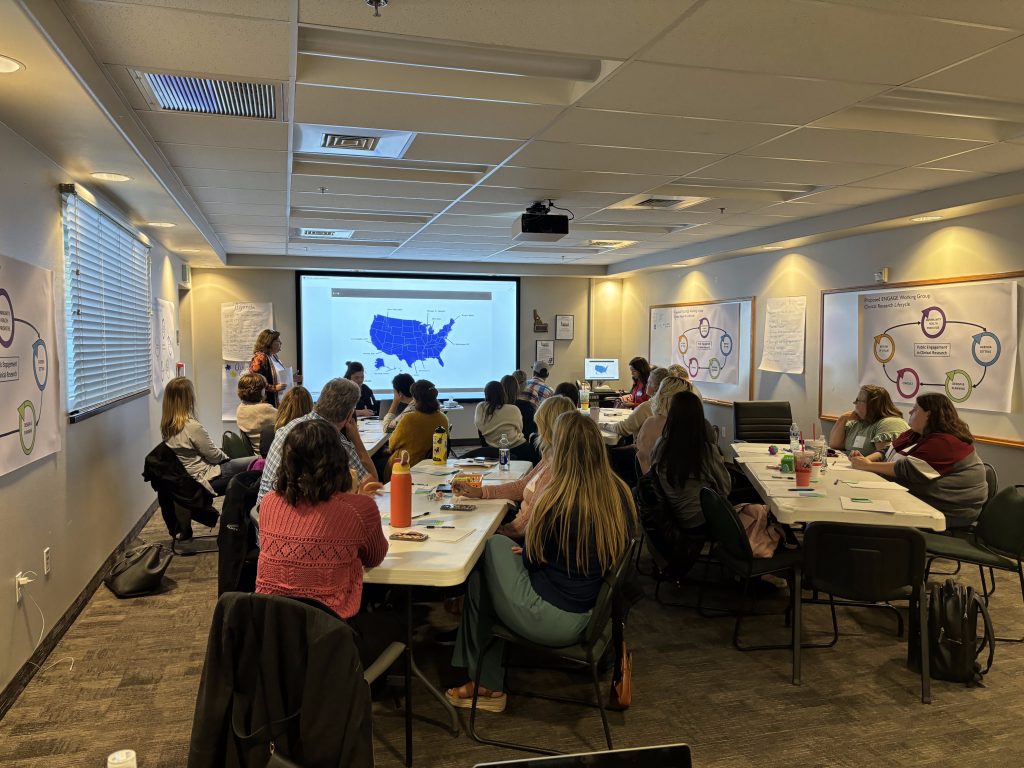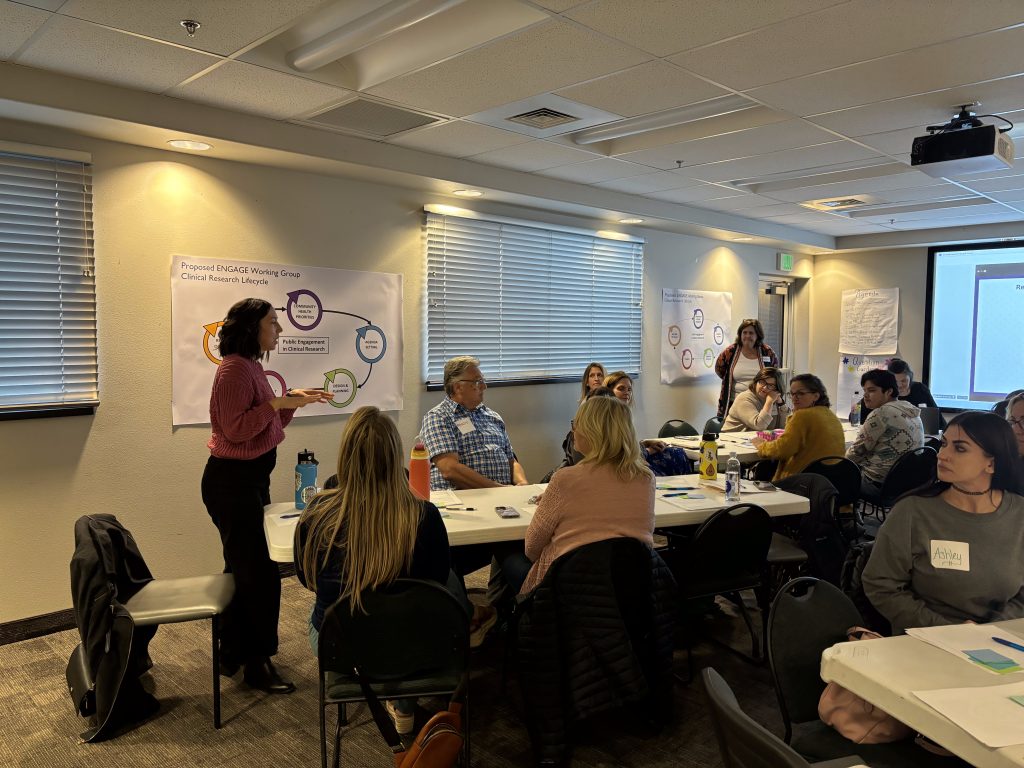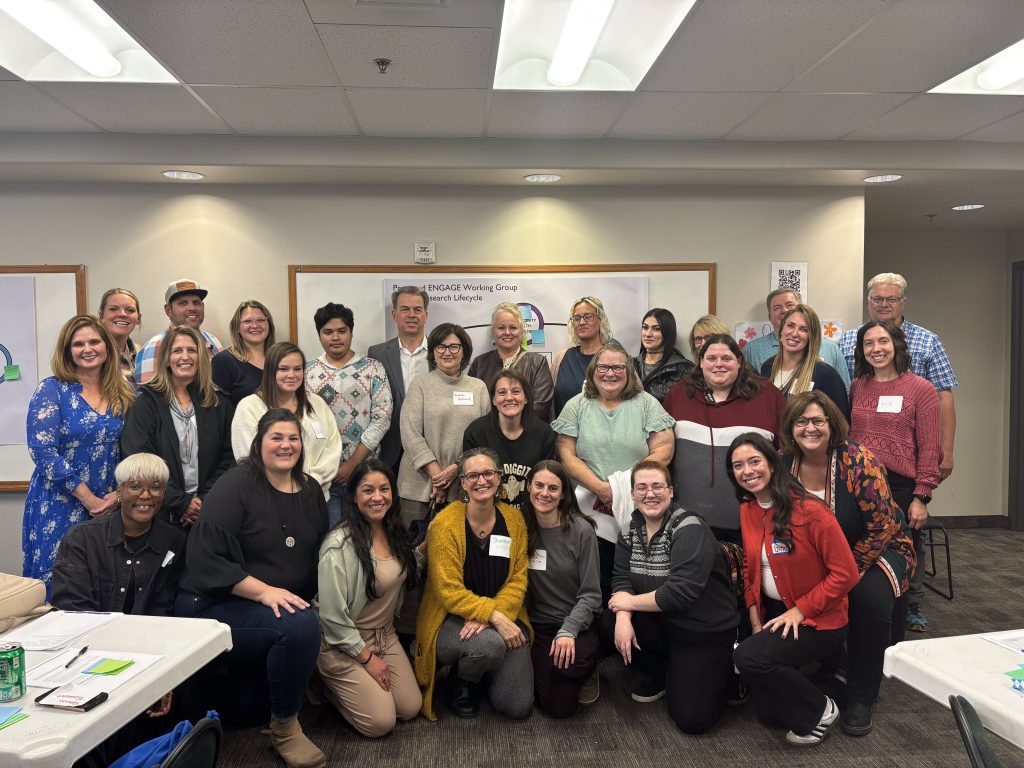I’m writing this blog on my way home from Idaho Falls, Idaho, tremendously excited to share with you all the progress being made to engage communities in clinical research. Through NIH’s new ENGAGE initiative, OSP and the NExTRAC are working to create an NIH-wide framework for including public voices in the planning, design, and conduct of clinical research. As part of this effort, OSP is hosting 12 “community conversations” around the country to learn more from individuals, families, and communities about how they think about clinical research – what it is, who is involved, and what it means (or doesn’t mean) to people in their everyday lives.
For the Idaho Falls conversation, folks spent the evening sharing their perspectives on a range of topics, including reflecting on the different types of clinical research studies, the clinical research lifecycle, and how they saw themselves and their communities benefiting from research. We also spent a lot of time digging into how clinical research priorities and study goals are set. It was clear that communities feel that they possess a unique vantage point that should help drive priority setting, which makes sense given that where you live is potentially the biggest driver of your health. Questions about returning “value” from the research conducted in communities was also on the forefront of people’s minds.
I am extremely grateful that people were eager to be candid, expressing a wide range of opinions. Issues sparking conversation ranged from politicization of empirical data, evolving trust in science, importance of mitigating inherent biases, and how to ensure representation and inclusiveness. While individual perspectives varied, there were clear threads of commonalities weaving throughout the conversation, including a genuine interest to find ways to sustain trustworthy relationships with researchers and the government so that we can collectively improve health outcomes for all.
By the end of the evening, folks were cautiously excited: how will NIH turn what we are saying into something with impact? When will we see results? The good news is that OSP has been largely learning from the NIH and Centers who have been doing this for some time. Additionally, if you’ve heard NIH Director, Monica Bertagnolli, you know that meeting patients where they are is one of her top priorities. Just this year, NIH launched the CARE for Health Initiative which works with communities to define the research questions that matter most to them by working with primary care clinics. By embedding these conversations in communities, we can work together to establish a foundation for sustained engagement with communities that are underrepresented in clinical research.
Finally, as I write this post, I am reflecting on how grateful I am to all the Idaho Falls folks (Idahoans, as I learned 😊) who came out to share their stories with us. We are learning so much from communities across the country and I encourage readers to keep tabs on our progress by checking out https://partnersinresearch.nih.gov/community-conversations/. Learning from people with different experiences, perspectives, and circumstances is what policy-making is all about and is necessary for making scientific research, and its outputs, most meaningful and impactful for all.










